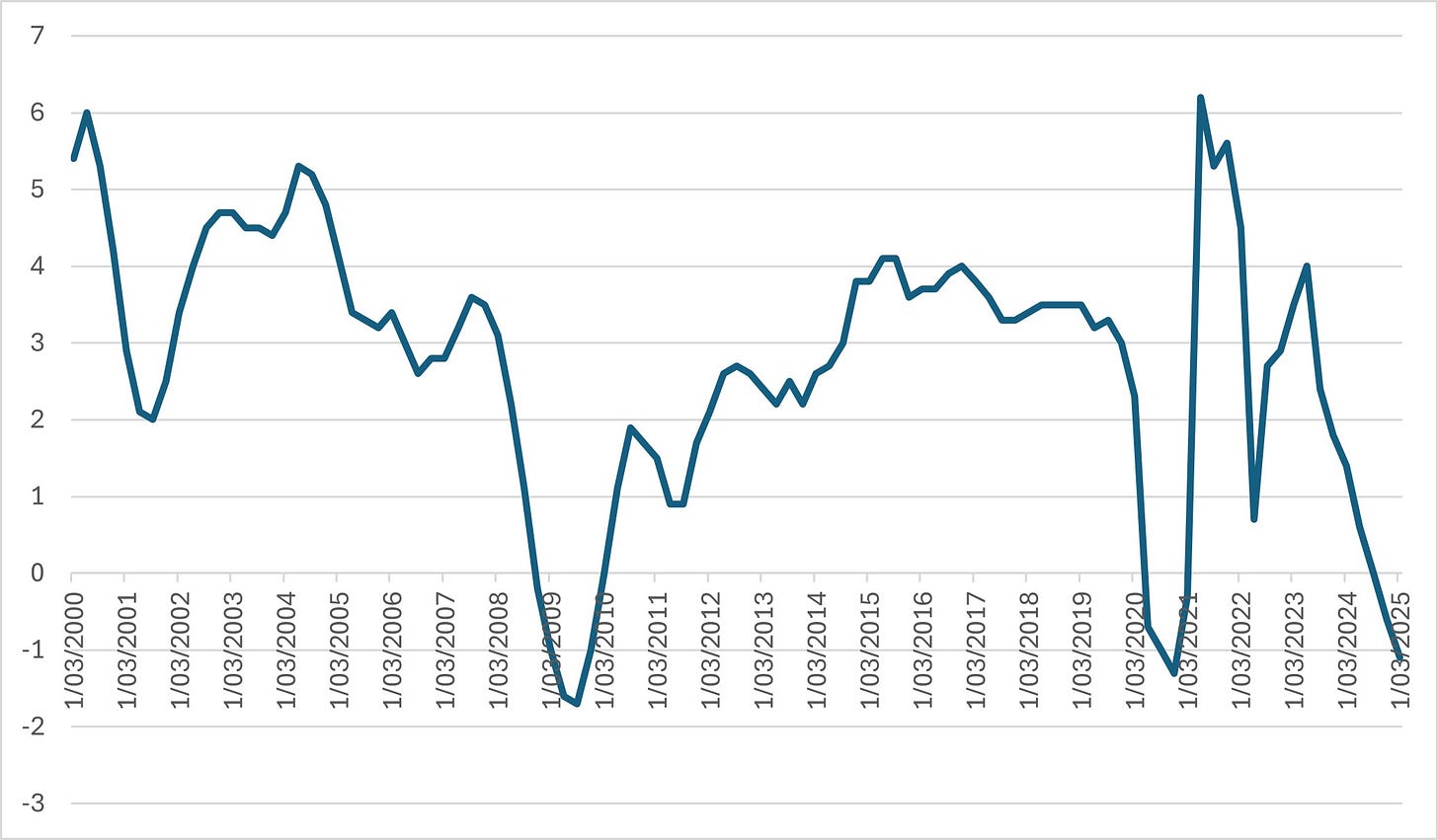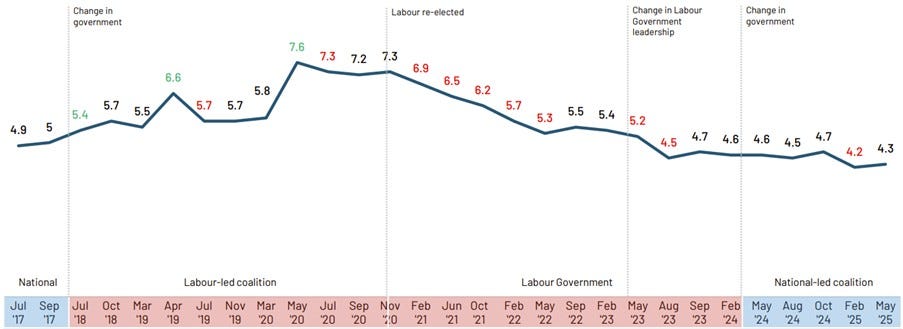Its not 1931, but it feels like it
Economists aren't often given to feeling hope.
Being an economist can be a lonely business at times. It’s called the dismal science for a reason. I can depress an audience from 250 paces — it’s an occupational hazard. Especially when a government as out of touch with reality as this one is in charge.
But today I want to point to history to provide hope. The Luxon regime is drawing a strange parallel from the past – the 1931 United–Reform coalition government.
That 1931 coalition government was formed to prevent the Labour Party from taking power, and it held a commanding 51 out of 80 seats in the House. It was headed by Prime Minister George Forbes, whose weaknesses “arose from doubts about his intelligence and ability to take initiatives1”. In reality, the government was largely run by the leader of another party in the coalition, Gordon Coates. Sound Familiar?
In 1932, the country was in a deep economic funk caused by the Great Depression. The government's response was to cut government expenditure, recommending2 cuts of 10% of operating budgets - including “education, health, and pensions”. By July 1933, unemployment had surged by 30,000 to 80,000. Public works investment3 was cut by 2/3rds.
As the historian Paul Moon4 said of the 1931 government “Uncertainty about the future in general and the financial state of the country in particular continued to grow, these efforts by the government – which were at best ineffective and more likely damaging to the economy – led to an unparalleled drop in public confidence in the way the country was being run”.
The historian Michael King5 said that Forbes government “could only see one answer, and that was to balance the budget by cutting costs”, and “the result was unemployment for tens of thousands and reduced purchasing power for others. Shopkeepers began to go bankrupt as customers could no longer pay bills”.
This 1931 story might sound sadly familiar to modern ears.
Cuts to government investment – tick.
Cuts to programmes to alleviate poverty – tick.
Rising unemployment? – tick.
Leading to a fall in economic confidence? – tick.
Shops and enterprises going broke? – tick.
You might think that New Zealand would be above duplicating that mistake, but as better economists than I have put it, “history repeats itself, first as tragedy, second as farce”.
When Gordon Coates was accused – unfairly – of telling6 a deputation of unemployed workers to “eat grass”, the public believed it. The current Minister for Social Development, Louise Upston, did say, “One of the problems is that it’s been, I guess for some, a bit too comfortable on welfare”.
The decisions of the 1931 government have formed the playbook of this 2023 government. Our current challenging economic conditions, caused initially by global factors, have been made far worse by the actions of the coalition. It’s actually quite hard to get a recession in New Zealand, but since 2000, we have had the Global Financial Crisis (GFC), the COVID-19 Lockdown, and now Hon. Nicola Willis.
Figure 1: New Zealand Annual GDP Change (%)
Source: RBNZ
So, what is the hope bit that I mentioned at the beginning?
Firstly, the coalition was roundly defeated in the following 1935 Election. It lost 31 of its seats in the House and was reduced to just 19. The country overwhelmingly rejected the politics of austerity, and the idea that the state had little role in helping people when they had needs.
Secondly, the country elected the first Labour Government of Michael Joseph Savage, and with it, it changed the face of New Zealand forever. As Historians7 Frank and McAloon put it, “The Savage Government reversed the Coalition's depression measures, reduced unemployment through a large public works programme, increased wages and strengthened trade unions. Labour expanded public education and state housing…The government’s crowning achievement was the Social Security Act, the foundation of the modern welfare state”.
The Social Security Act 1938 introduced universal free health services and extended benefits for the aged, sick and unemployed. It was the incompetence and mean-spirited nature of the 1931 government that provided the space for that change.
As the writer Frank Sargeson8 wrote of the time, “A great variety of people were becoming very conscious of the miseries and hardships which were inflicted on people, and inflicted unjustly, because it was through no fault of their own that they suffered”. People could increasingly see the damage being done as a consequence of the government's policies.
According to the 2025 June Ipsos Mori Issues Monitor, more and more people believe that today too. The Monitor shows the rating of the Government's performance in the past 6 months at the lowest scores since Ipsos began tracking in 2017.
Figure 2: Ipsos Mori rating of government performance over the past 6 months
Source: Ipsos Mori
The Labour government of 1935 leaned into the space created by the previous government and changed what was acceptable for a government to do. The opportunity being created right now by the Luxon-led coalition shouldn’t be missed – it should be seized for positive and necessary economic and social change.
It is that possibility which gives me hope. We can make this National-led government - like the 1931 coalition - a one-term government. We can set out a popular and realistic alternative to the politics of depression and retrenchment. We can return to putting working people, their whānau, and communities at the centre of what a good economy looks like.
At the CTU, we are working on such a plan – Aotearoa Reimagined, with policies designed to both undo the damage of this government and to improve the lives of New Zealanders. You might not agree with it all – or indeed large parts of it! But I hope that you all agree that the current policies of the government aren’t fit for the challenges facing New Zealand.
We will need more than just a series of gentle policy nudges to get back on track. Housing. Health. Unemployment. Child Poverty. Climate Change. Te Tiriti. All of these interlinked issues won’t be fixed if we continue with just more of the same.
In ten years, it will be the centenary of the First Labour Government’s election. In forthcoming decade, we have a choice to make as a country: do we look more like the vision of the 1935 Michael Joseph Savage government - or more like the vision of the 1931 George Forbes government? Have we used each of those 120 months to create a country with more economic security for our people, or one in which record numbers of New Zealanders continue to leave?
What gives me hope is that this choice is still in our hands.
There are 473 days until the 31st October 2026 – my guess for the next election date. We can’t waste a single day making the right choice.
P.345, The Penguin History of New Zealand, Michael King, 2003
P257, Not in Narrow Seas, Brian Easton, 2020.
P209, New Zealand in the Twentieth Century, Paul Moon, 2011
Ibid
P.346, The Penguin History of New Zealand, Michael King, 2003
P.349, The Penguin History of New Zealand, Michael King, 2003
P96, The New Zealand Labour Party 1916-2016, Franks and McAloon, 2016.
P351, The Penguin History of New Zealand, Michael King, 2003.



Nice work Craig. The damage these guys have delivered trying to get back-on-track with growth-growth-growth has deeply scarred New Zealand’s economy and its society. I’m looking forward to the next Michael Savage taking over in 2026.
Thank you for a hopeful outlook. Something positive at last.
The propaganda/misinformation deluge will be intense - how to deal effectively with that?
Informing the voters to understand what the choice is will be vital! Galvanising the people who will benefit most (all of us?!) to vote for the change we need will be a huge task. Any suggestions?